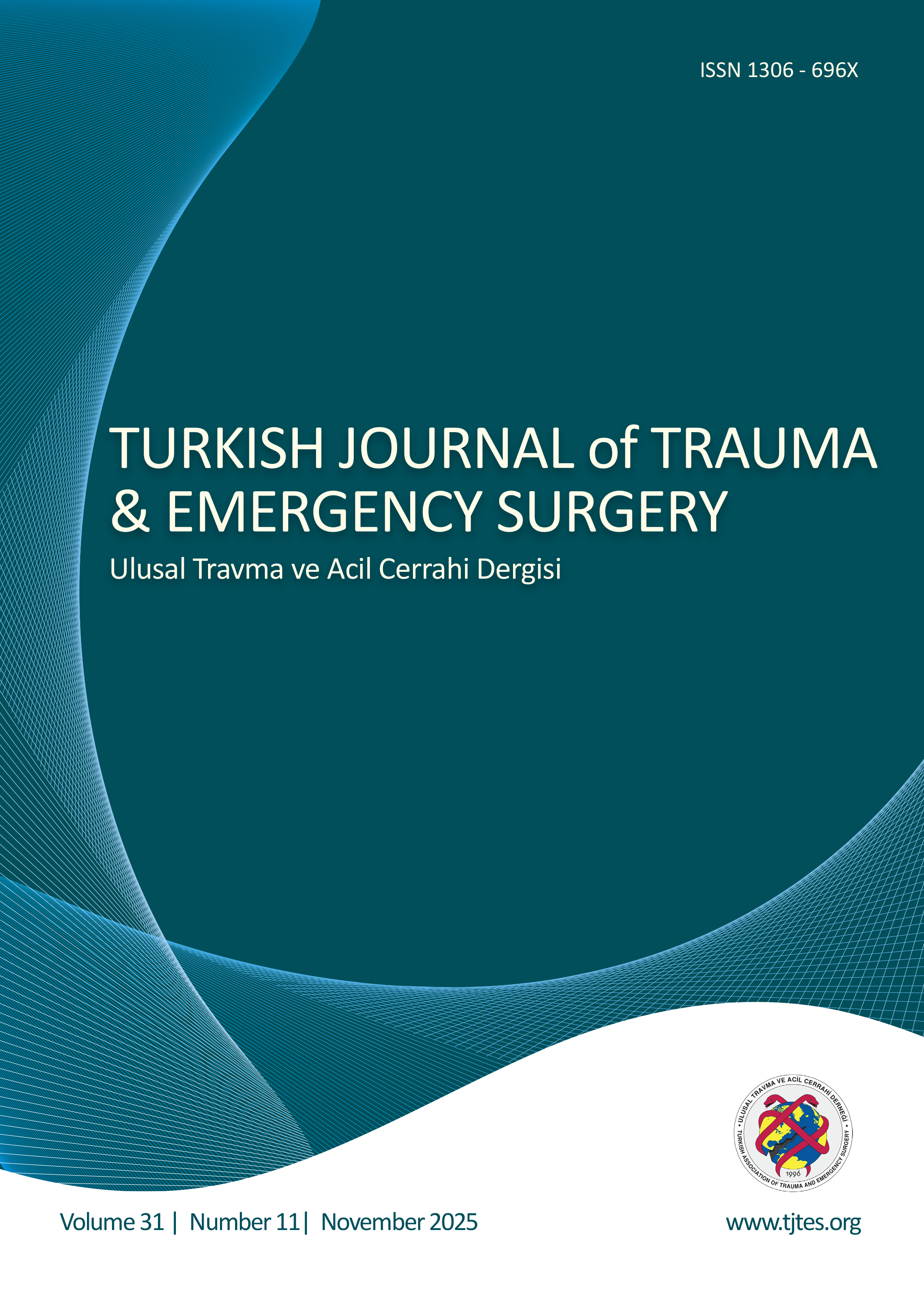Hızlı Arama
Önerilen bir makine öğrenimi modeline dayalı akut apandisit öngörüsünde fekal kalprotektinin değeri
Zeynep Küçükakçali1, Sami Akbulut2, Cemil Çolak11İnönü Üniversitesi Tıp Fakültesi, Biyoistatistik ve Medikal İnformatik Anabilim Dalı, Malatya, Türkiye2İnönü Üniversitesi Tıp Fakültesi, Genel Cerrahi Anabilim Dalı, Malatya, Türkiye
AMAÇ: Bu çalışmanın amacı, makine öğrenmesi (ML) algoritmalarından biri olan Random Foresti (RF) akut apandisit (AAp) ön tanısı olan hastalar-dan oluşan bir veri setine uygulamak ve AAp tanısı ile ilişkili en önemli faktörleri değişken önemliliğine göre ortaya koymaktır.
GEREÇ VE YÖNTEM: Bu vaka-kontrol çalışmasında AAp için biyobelirteçleri tahmin etmek üzere AApsi olan (n=40) ve olmayan (n=44) iki hasta grubunu karşılaştıran açık erişimli bir veri seti kullanıldı. Veri setinin modellenmesinde RF kullanıldı. Veriler eğitim ve test veri seti olmak üzere ikiye ayrıldı (80: 20). Model performansı için doğruluk, dengeli doğruluk, duyarlılık, özgüllük, pozitif tahmin değeri (PPV) ve negatif tahmin değeri (NPV) performans metrikleri değerlendirildi.
BULGULAR: RF modeline ait doğruluk, dengeli doğruluk, duyarlılık, özgüllük, PPV, NPV ve F1 skorları sırasıyla %93.8, %93.8, %87.5, %100, %100, %88.9 ve %93.3 olarak hesaplandı. Modele ilişkin değişken önem değerlerinin ardından, AAp tanısı ve öngürüsü ile en çok ilişkili olan değişkenler sırasıyla fekal kalprotektin (%100), radyolojik görüntüleme (%89,9), beyaz kan testi (%51,8), C-reaktif protein (%47,1), semptomların hastane ziya-retinde başlaması (%19.3), hasta yaşı (%18.4), ALT düzeyleri >40 (<%1), ateş (< %1) ve mide bulantısı/kusma (<%1) olarak belirlendi. TARTIŞMA: Bu çalışmada ML yöntemi ile AAp için bir tahmin modeli geliştirildi. Bu model sayesinde AApi yüksek doğruluk ile öngören biyobelir-teçler belirlendi. Böylece klinisyenlerin AAp tanısına karar verme süreci kolaylaşacak, yüksek doğruluk ile zamanında tanı konulabilmesi sayesinde perforasyon ve gereksiz ameliyat riskleri en aza indirilecektir.
Value of fecal calprotectin in prediction of acute appendicitis based on a proposed model of machine learning
Zeynep Küçükakçali1, Sami Akbulut2, Cemil Çolak11Department of Biostatistics and Medical Informatics, Inonu University Faculty of Medicine, Malatya-Türkiye2Department of Surgery, Inonu University Faculty of Medicine, Malatya-Türkiye
BACKGROUND: The aim of this study is to apply random forest (RF), one of the machine learning (ML) algorithms, to a dataset consisting of patients with a presumed diagnosis of acute appendicitis (AAp) and to reveal the most important factors associated with the diagnosis of AAp based on the variable importance.
METHODS: An open-access dataset comparing two patient groups with (n=40) and without (n=44) AAp to predict biomarkers for AAp was used for this case−control study. RF was used for modeling the data set. The data were divided into two training and test dataset (80: 20). Accuracy, balanced accuracy (BC), sensitivity, specificity, positive predictive value (PPV), and negative predictive value (NPV) performance metrics were appraised for model performance.
RESULTS: Accuracy, BC, sensitivity, specificity, PPV, NPV, and F1 scores pertaining to the RF model were 93.8%, 93.8%, 87.5%, 100%, 100%, 88.9%, and 93.3%, respectively. Following the variable importance values regarding the model, the variables most associated with the diagnosis and prediction of AAp were fecal calprotectin (100 %), radiological imaging (89.9%), white blood test (51.8%), C-reactive protein (47.1%), from symptoms onset to the hospital visit (19.3%), patients age (18.4%), alanine aminotransferase levels >40 (<1%), fever (<1%), and nausea/vomiting (<1%), respectively.
CONCLUSION: A prediction model was developed for AAp with the ML method in this study. Thanks to this model, biomarkers that predict AAp with high accuracy were determined. Thus, the decision-making process of clinicians for diagnosing AAp will be facilitated, and the risks of perforation and unnecessary operations will be minimized thanks to the timely diagnosis with high accuracy.
Makale Dili: İngilizce





